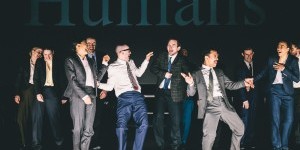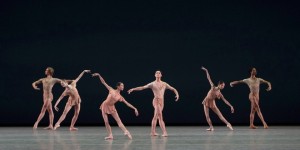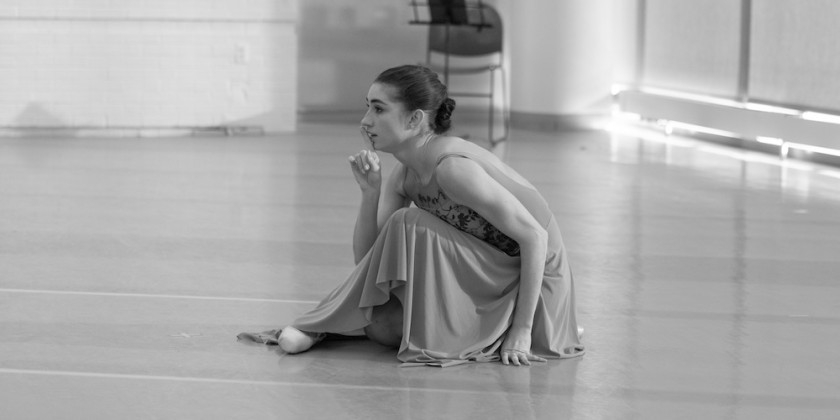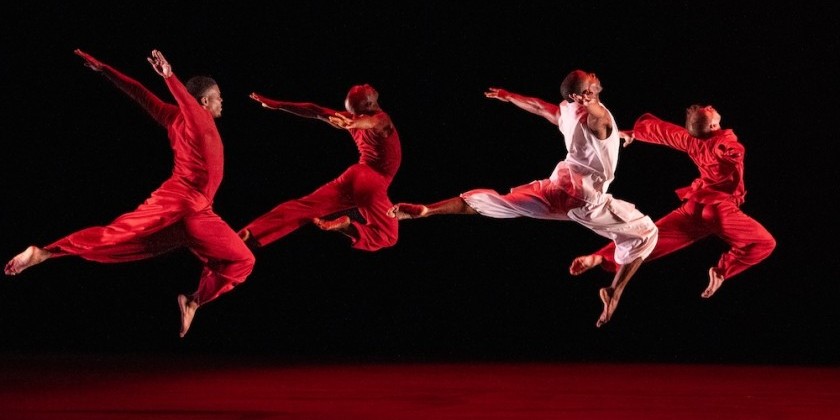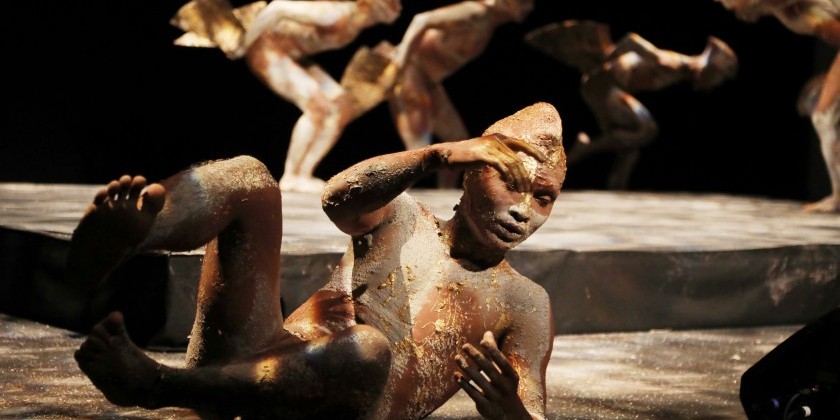IMPRESSIONS: Bobbi Jene Smith and Or Schraiber for the Paris Opera Ballet
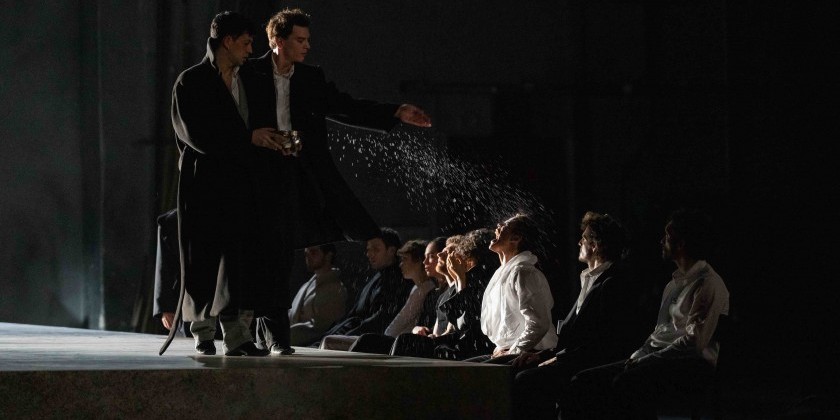
Pit (premiere) by the Paris Opera Ballet
Choreography: Bobbi Jene Smith & Or Schreiber
Music: Celeste Oram, Jean Sibelius
Musical Direction: Joana Carneiro
Set Design: Christian Friedländer
Costume Design: ALAÏA by Pieter Mulier
Lighting Design: John Torres
Violin: Petteri Iiovonen
Dramaturgy: Johnathan Fredrickson
Performers: Clémence Gross, Caroline Osmont, Juliette Hilaire, Laurène Lévy, Marion Gautier de Charnacé, Awa Joannais, Héloïse Jocqueviel, Alexandre Gasse, Jack Gasztowtt, Axel Ibot, Yvon Demol, Mickaël Lafon, Maxime Thomas, Hugo Vigliotti, Takeru Coste, Théo Ghilbert, Julien Guillemard, Loup Marcault-Derouard, Antonin Monié
Date: March 28, 2023
American dancer and actress Bobbi Jene Smith says that sometimes we “have to dig into parts of ourselves that aren’t so bright in order to see the light.” And this is true, but sometimes we find ourselves sucked into the muck with no way out.
Pit, a new work created by Smith and Or Schraiber for and with the corps of the Paris Opera Ballet, invites us to peer voyeuristically into a brutal world, writhing with feeling, yet devoid of meaning. Pit is filled with intense, short-lived “collisions of intimacy” with relationships focused on the possession of, attraction to, and abuse of power. The dancers play witness to the depths of one another’s desire, anguish and despair without a spark of empathy. Driven by self-centered desperation, they team up against one another, then suddenly find themselves the next victim in this infernal world.
%2C%20Takeru%20Coste%2C%20Marion%20Gautier%20de%20Charnace%CC%81%20(c)%20Yonathan%20Kellerman%20OnP.jpg)
The performers, in stunning black and white evening wear by ALAÏA’s creative director Pieter Mulier, navigate a massive platform planted on the stage like the granite slab of a tomb. They dance on top or beside it, drip over its edges, and sit around it. An enormous door at the back of the bare stage entices with occasional leakages of light as one man in a white coat exits or enters. Pacing along the rim of the platform like a meat inspector, or the overseer on a slave ship, he pointedly ignores a fight that breaks out among two men.
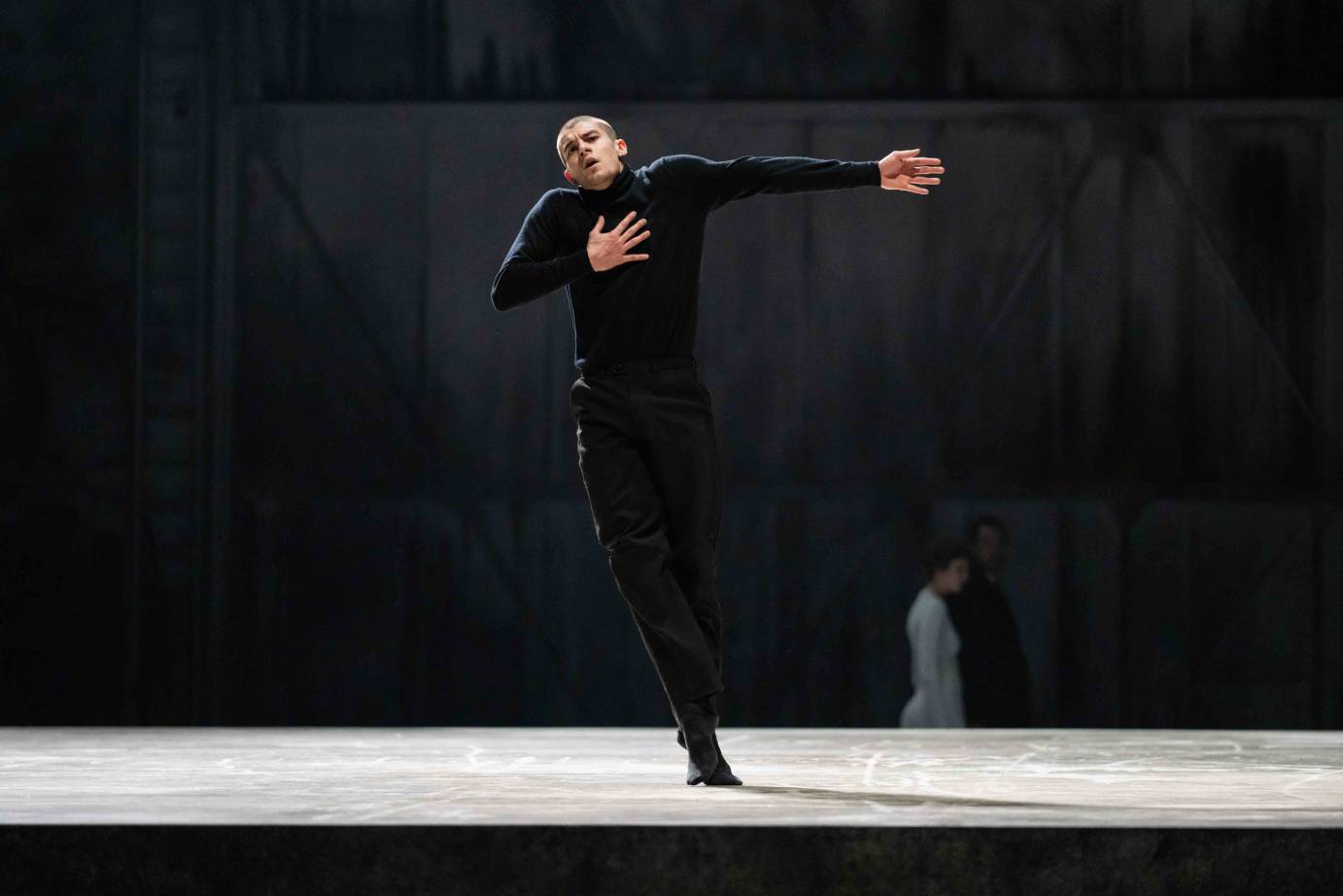
When Loup Marcault-Derouard mounts the platform, the dancing begins. His liquid body weaves, slices and carves while his legs stab into a sharp piqué. Feet stutter rapidly before he lengthens out into a lightly distorted parallel attitude. His distress is palpable as he reaches to embrace Héloïse Jocqueviel, who has been watching from nearby. She takes off his coat with aggressive sensuality, pushing him back into the space to continue. His feet sputter, spit, and burst apart like a firecracker. He moves toward her. She shoves him back again. Distraught and distorted, torso tight and sharp, he becomes elastic with yearning. For what, we do not know.
Dancers run along the base edges of the platform, literally framing this solo with their desperation and fatigue. Marcault-Derouard moves toward the woman again, arms aching to embrace, but she allows him no exit or distraction. When he finally approaches her with his arms held wide apart as if to say ‘I am not going to touch you,’ the sweet strains of a violin slide through the air and under our skin. They look each other in eye for the first time as she backs away.
%2C%20He%CC%81loi%CC%88se%20Jocqueviel%2C%20Mickae%CC%88l%20Lafon%20(c)%20Yonathan%20Kellerman%20OnP.jpg)
Mickael Lafon and Héloïse Jocqueviel in Pit; photo by Yonathan Kellerman
A myriad of dancers come and go, each moving with sinuous limbs and torsos in all manner of complex and inventive ways. Each dancer is magnificent. Yet no one performer is allowed to remain the focal point for more than a few seconds before someone or something else draws our attention. There is no time to identify them, much less identify with them. The piece progresses in a flurry of meaninglessness distractions, like how we might surf the internet with one intention but end up somewhere else altogether, our original purpose lost in the immediacy of a moment that does not actually matter.
%2C%20Gasse%2C%20Le%CC%81vy%2C%20Ibot%20au%201er%20plan%20(c)%20Yonathan%20Kellerman%20OnP.jpg)
Original music by Celeste Oram and the heart-wrenching violin concerto in D minor, opus 47 by Jean Sibelius are played by live orchestra under the adept direction of Joana Carneiro. Nothing is sacred: soloist Petteri Iivonen rises up from the orchestra pit only to have his pockets emptied and his throat seized by one of the dancers. He changes his violin for a gun, which he shoots, but why poultry fall from above is a bit over my head. Yet when he plays, the music truly “gives flight to the imagination,” as Plato once put it.
There are beautiful moments, but they pass too fast: a foot-shin-leg entwines another body as they melt into the tumult; two men entwine wrist to wrist with exquisite sensitivity, and walk off together, hands in pockets as if nothing intimate ever happened; one man pushes another down with a forceful yet uncharacteristically gentle foot.
%2CTakeru%20Coste%2C%20Antonin%20Monie%CC%81%20(c)%20Yonathan%20Kellerman%20OnP.jpg)
In spite of these moments, this is not a functional community. What is depicted is the worst of ourselves — elegant savages. One performer deposits a pile of shoes on the platform. The rest of them dive in like a troop of apes, each scrambling for a shoe that fits. When a wheelbarrow-load of dirt is similarly dumped on stage, each one fights for their bit of earth. They line up in front of a cashier clerk to, almost ritualistically, place their fistful of dirt down on the desk like paying an entry or exit fee. Once paid, the soil is unceremoniously swiped aside, the supplicant is passed through and embraced, as the next person approaches. Two near-nude bodies draped at the foot of the table like corpses are slowly buried as handful after handful of dirt falls onto them.
These people seem to be abandoning any humanity they might once have had as they dance on their own common grave. The brutality continues. They raise an occasional ‘chosen one' back up onto the platform, no matter how many times they fall as if they desperately needs someone up on that sinister pedestal, regardless of how cruel or perverse that individual might be. In this hateful world projected for us by Smith and Schraiber, there is no light. When I search more deeply, the only glimmer I find is in the people in my own life who still harbour a little love and compassion.
%2C%20Axel%20Ibot%2C%20Alexandre%20Gasse%20(c)%20Yonathan%20Kellerman%20OnP%20(2).jpg)
Pit feels like it has no point, no purpose, no meaning. It is utterly repellant and absurd. My first response is to reject it altogether. But when I force myself to take this work seriously — and believe me I would rather not — to search for intent, to add up the imagery, I find there are many social truths buried in this festering sewage. We are dancing on our grave. There is no exit, except for the guy with all the power who demands we pay with our dignity — abandon decency — and even then we just end up where we started. When we value power above all else and exploit one another’s vulnerability, we have lost our humanity and all that is really worth living for. On deeper reflection, this work resonates in me as a dire warning. What are we perpetuating through our choices in the moment? And what are we abandoning?




